Putin’s Ukraine aims unchanged
U.S. intelligence sources indicate that Russian President Vladimir Putin still intends to take control of all of Ukraine and reclaim parts of Europe t...
The Kingsway Exchange Tunnels beneath London, which served as the real-world inspiration for James Bond's legendary Q Branch, are set to become one of the world's most extraordinary spy museums by 2028.
This remarkable transformation will bring to light a hidden chapter of British espionage history, where Ian Fleming himself once worked during World War II, developing the experiences that would later shape his iconic fictional secret agent . The £120 million project represents not just a preservation of history, but a revolutionary approach to immersive storytelling that will allow millions of visitors to walk in the footsteps of real spies who helped shape the 20th century .
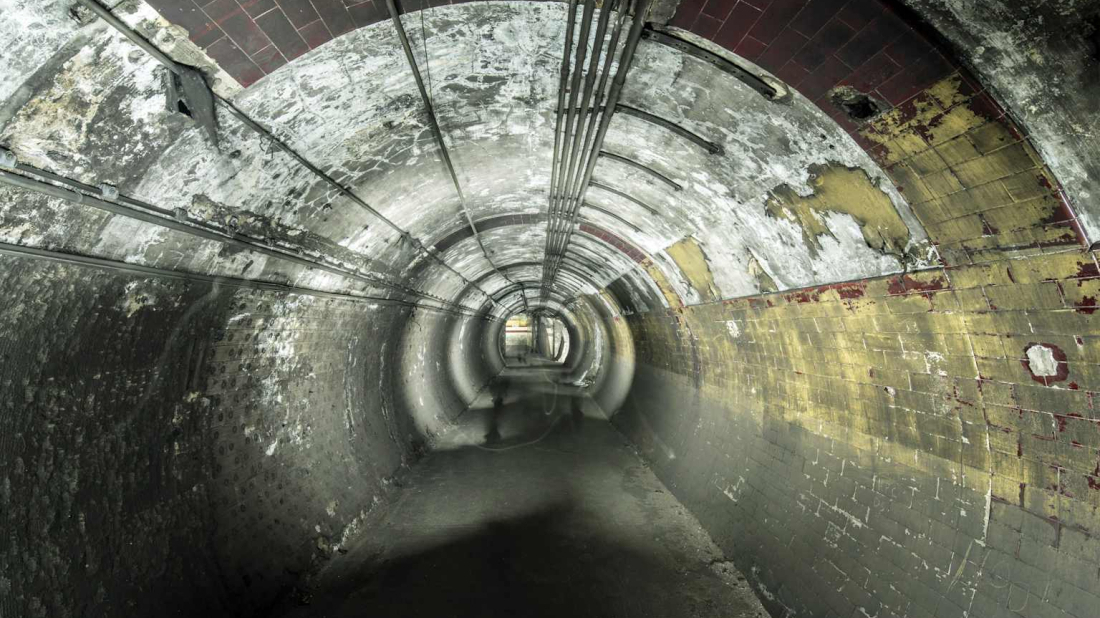
The Wartime Origins: Deep-Level Shelters and Hand-Dug Protection
Construction During the London Blitz
The story of these remarkable tunnels begins in 1940, when the British government initiated construction of eight deep-level air raid shelters across London to protect civilians from Nazi bombing campaigns . The Kingsway Exchange Tunnels were hand-dug by workers 40 meters below High Holborn, creating a vast subterranean network stretching 1.6 kilometers in length with tunnels wide enough to accommodate three London buses . Construction continued through 1942, but by the time the tunnels were completed, the intensity of the Blitz had diminished, and they were never used for their original protective purpose .
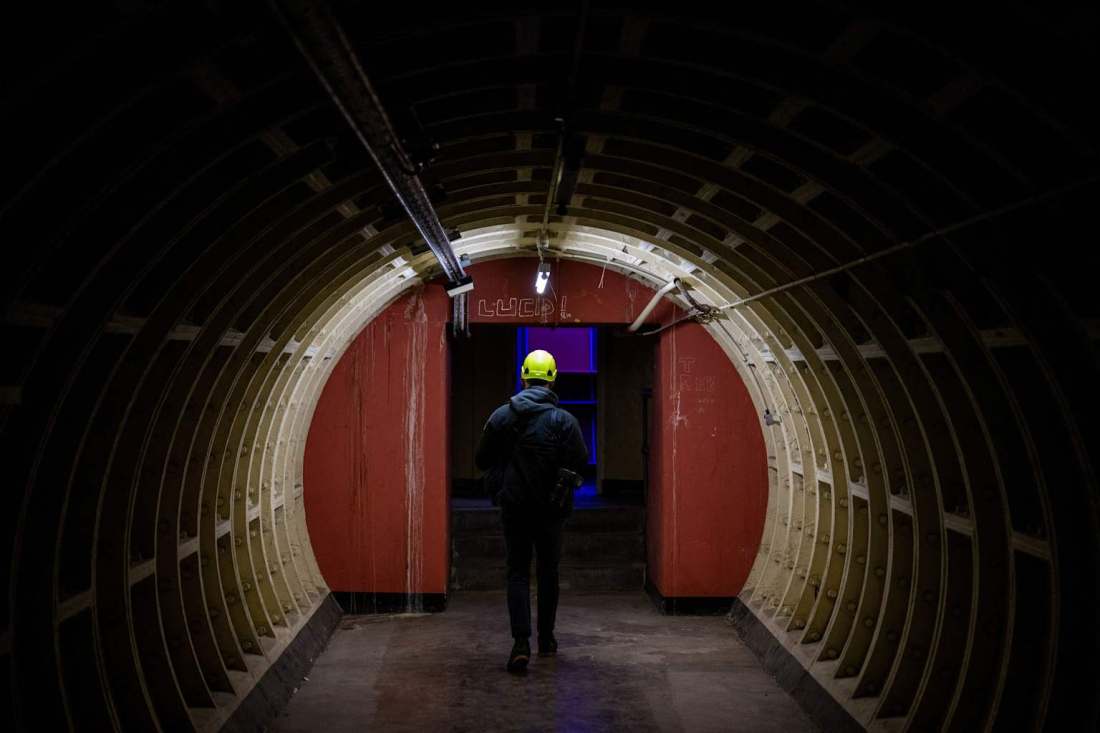
The engineering feat represented by these tunnels cannot be overstated, as workers labored by hand to create approximately 86,000 square feet of underground space . The two parallel "streets" run alongside London's Northern and Central Underground lines, demonstrating the ambitious scope of Britain's civil defense preparations . Despite never serving their intended purpose as bomb shelters, these tunnels would soon find a far more secretive and strategically important role in Britain's war effort .
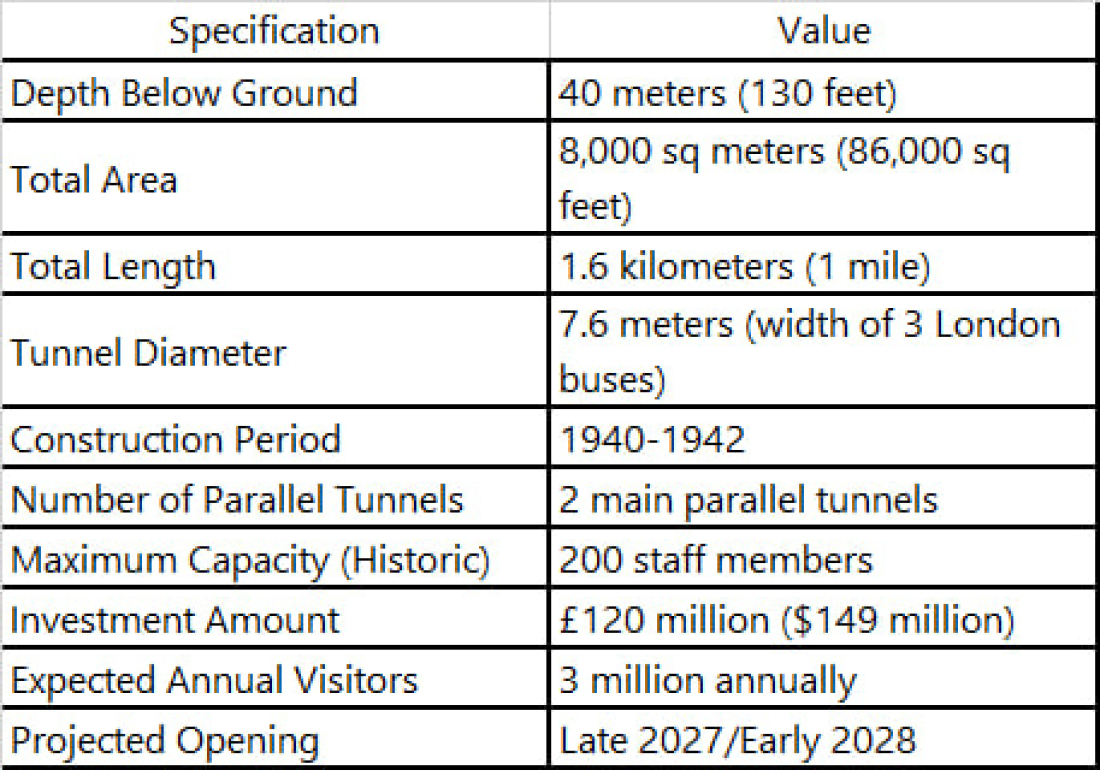
Transformation into Intelligence Headquarters
In 1944, the British government repurposed the abandoned air raid shelters to serve as the headquarters for the Special Operations Executive (SOE), a covert organization created by Winston Churchill to support European resistance movements fighting Nazi occupation . The SOE represented a new kind of warfare, conducting sabotage operations, supporting partisan fighters, and developing ingenious gadgets and weapons for secret agents operating behind enemy lines . This underground headquarters became the nerve center for some of the most daring and crucial operations of the war's final phases .
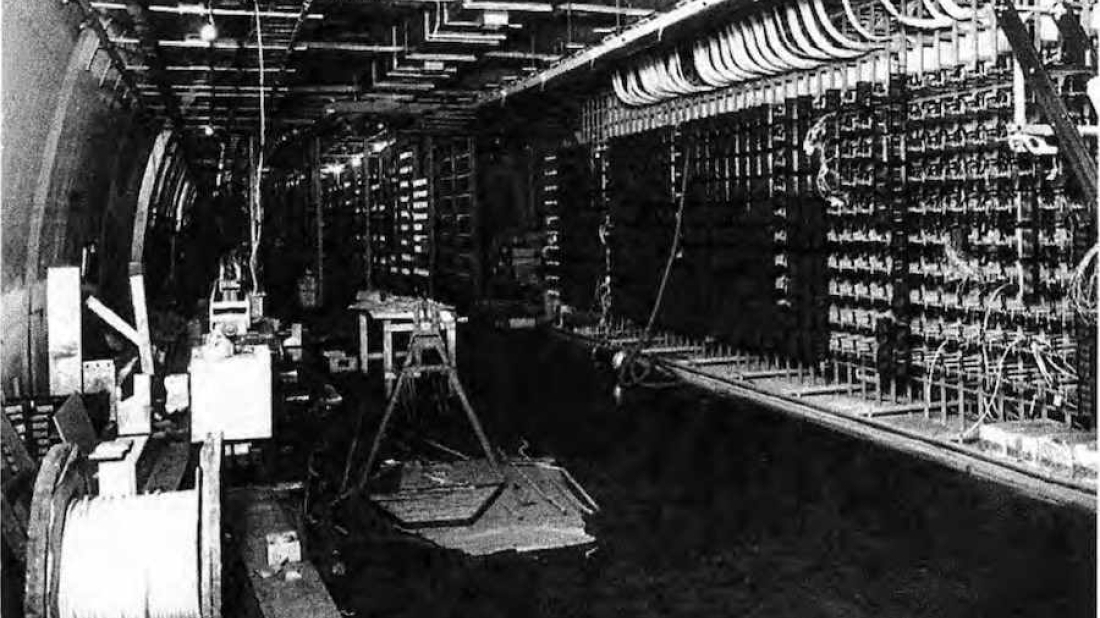
The choice of the Kingsway tunnels for SOE operations was strategic, providing both security and secrecy for Britain's most sensitive intelligence activities . The facility could accommodate up to 200 staff members, supported by self-contained water and air conditioning systems, creating a fully functional underground intelligence complex . It was here that the real-world inspiration for James Bond's fictional world would take shape, as young naval intelligence officers worked alongside the SOE's most skilled operatives and technical specialists .
Ian Fleming and the Birth of Q Branch
Fleming's Role in Naval Intelligence
Ian Fleming, who would later create the world's most famous fictional spy, served as the Admiralty's liaison officer to the Special Operations Executive at the Kingsway tunnels during 1944 . Fleming's position gave him unprecedented access to the SOE's operations, including their gadget development programs, secret communication systems, and innovative espionage techniques . This direct workplace experience in the underground complex provided Fleming with authentic details about intelligence operations that would later inform his James Bond novels with remarkable accuracy .
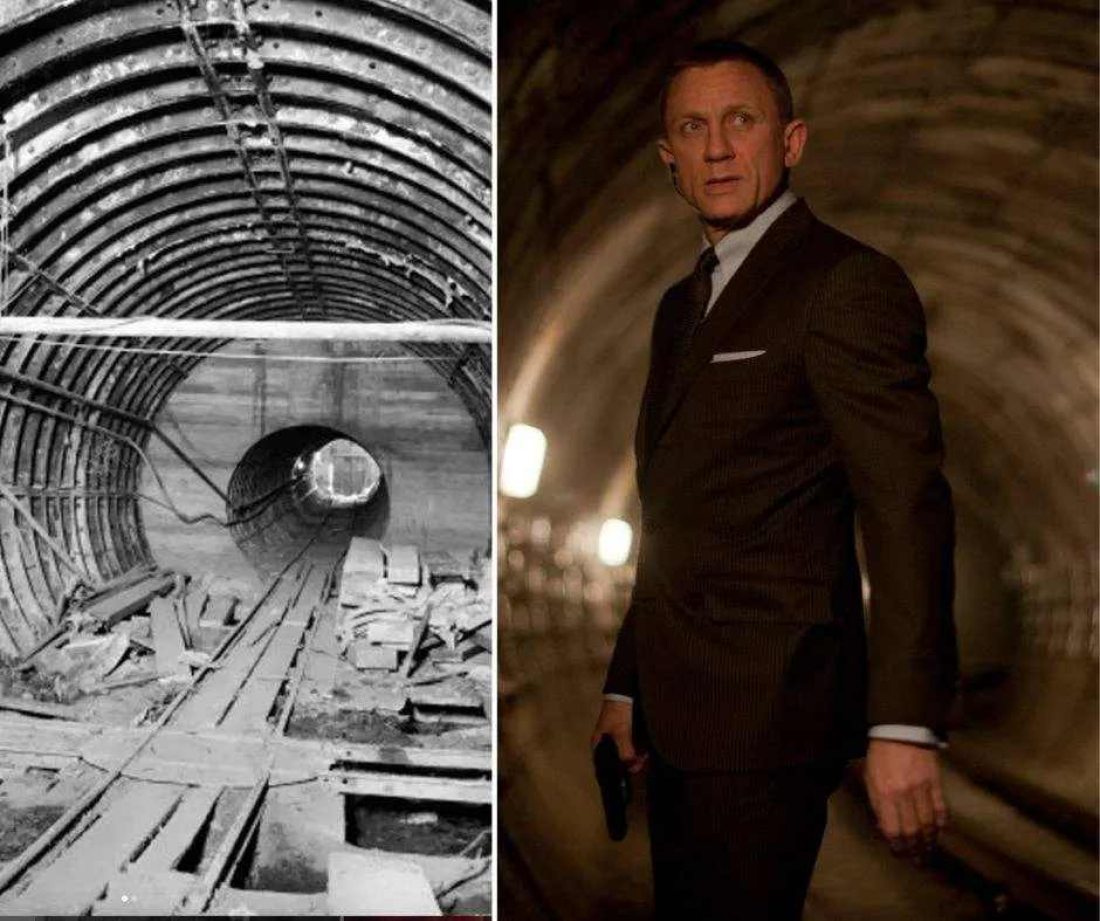
Fleming's time at the tunnels exposed him to the real-world equivalent of what would become Bond's Q Branch, where SOE technicians developed concealed weapons, communication devices, and survival equipment for agents operating in occupied territory . The atmosphere of secrecy, the cutting-edge technology, and the life-or-death stakes of the operations Fleming witnessed all contributed to the authentic feel of his later fictional works . Even the organizational structure Fleming observed, with its mysterious department heads referred to simply as "M," would be directly incorporated into his Bond stories .
The Real Q Branch Connection
The Special Operations Executive's technical department at Kingsway functioned as the real-world prototype for Bond's famous Q Branch, developing ingenious gadgets concealed within everyday objects . SOE technicians created explosive cigarettes, concealed radios, specialized weapons, and survival equipment that agents could use behind enemy lines . Fleming witnessed firsthand the development and testing of these devices, observing the careful balance between functionality and concealment that would become a hallmark of Bond's equipment .
The parallels between the real SOE operations and Fleming's fictional Q Branch extend beyond mere gadgets to encompass the entire ethos of technological innovation in service of intelligence operations . The underground setting itself, with its maze-like corridors and hidden rooms, provided the perfect backdrop for the mysterious and sophisticated world Fleming would later create . The authenticity of Fleming's descriptions of secret service operations stems directly from his daily work environment in these very tunnels .
Cold War Communications Hub
The TAT-1 Transatlantic Cable
Following World War II, the Kingsway tunnels underwent dramatic expansion to serve as Britain's most secure telecommunications facility . In 1956, the tunnels became the UK terminal for TAT-1, the first transatlantic telephone cable, marking a revolutionary advancement in international communications . The cable system could carry 35 simultaneous telephone calls between Britain and North America, representing a massive improvement over previous radio-based communications .

The strategic importance of this communications link cannot be overstated, as it provided secure, reliable contact between Britain and its most important ally during the early Cold War period . The tunnels' deep underground location and robust construction made them ideal for protecting these vital communication links from potential nuclear attack . By 1963, the facility had been upgraded to handle 48 channels and incorporated advanced time-assignment speech interpolation technology, effectively doubling the system's capacity .
The Moscow-Washington Hotline
Perhaps the most historically significant use of the Kingsway tunnels came in 1963, when they became the routing point for the famous "hotline" between the White House and the Kremlin . This secure communication link was established following the Cuban Missile Crisis, when both superpowers realized that the slow pace of diplomatic communications had unnecessarily escalated tensions . The hotline used teleprinter technology rather than voice calls, as written messages were considered less prone to misinterpretation during crisis situations .
The Cuban Missile Crisis had demonstrated the dangerous delays inherent in traditional diplomatic communications, with some critical messages taking up to 12 hours to decode, analyze, and respond to . The new secure link through the Kingsway tunnels reduced communication time to minutes, potentially preventing future nuclear confrontations . The tunnels thus played a crucial role in Cold War stability, serving as a literal lifeline between the world's two nuclear superpowers .
Decommissioning and Abandonment
Technological Obsolescence
By the late 1980s, rapid advances in telecommunications technology had rendered the Kingsway tunnels' communication systems obsolete . The massive electromechanical switching equipment that had once represented cutting-edge technology was replaced by digital systems that required far less space and offered superior capabilities . British Telecom, which had inherited ownership of the facility from the government in 1981, began the process of decommissioning the tunnels' telecommunications operations .
The end of the tunnels' operational life marked the close of a remarkable 50-year chapter in British intelligence and communications history . The facility that had once bustled with 200 staff members, complete with Britain's deepest licensed bar, restaurant, and recreational facilities, fell silent . For decades afterward, the tunnels remained largely forgotten, known only to urban explorers and a handful of telecommunications historians .
Years in Limbo
From 1990 to 2023, the Kingsway tunnels remained in a state of suspended animation, with most of their original equipment and infrastructure intact but unused . British Telecom put the facility up for sale in 2008, but the unique nature of the property and the significant investment required for any redevelopment made finding suitable buyers challenging . During this period, the tunnels became an inadvertent time capsule, preserving not just the physical infrastructure but also the atmosphere of Britain's most secretive Cold War installations .

The Revival: London Tunnels Project
The transformation of the Kingsway tunnels began in earnest when Australian entrepreneur Angus Murray, founder of Castlestone Management, recognized the extraordinary potential of this hidden historical asset . Murray's background in investment management and his experience with large-scale conservation projects made him uniquely qualified to undertake the complex challenge of converting the tunnels into a world-class tourist attraction . His vision extended beyond simple historical preservation to create an immersive experience that would honor the tunnels' remarkable history while providing cutting-edge entertainment .
The London Tunnels company, established in 2021, completed the acquisition of the tunnels from British Telecom in 2023, setting in motion the most ambitious heritage tourism project in London's recent history . Murray's approach emphasizes both historical accuracy and technological innovation, ensuring that visitors will experience not just the physical spaces but also the atmosphere and significance of the tunnels' various historical periods .
Architectural Partnership with WilkinsonEyre
The London Tunnels project has partnered with WilkinsonEyre, one of Britain's most prestigious architectural firms, known for their work on landmark projects including the Battersea Power Station redevelopment and Singapore's Gardens by the Bay . WilkinsonEyre's expertise in transforming historical spaces while preserving their essential character makes them ideal partners for this complex undertaking . Their approach emphasizes "protecting the heritage of the tunnels with a future purpose," ensuring that the development respects the site's historical significance while creating a viable modern attraction .
The architectural plans call for careful preservation of original telecommunications equipment, authentic 1940s-1960s infrastructure, and the tunnels' distinctive industrial aesthetic . New interventions will include high-resolution curved immersive screens, interactive structures, scent-emitting technology, and hundreds of strategically placed acoustic speakers to create an unprecedented multi-sensory historical experience . The design strategy mirrors WilkinsonEyre's approach at Battersea Power Station, where the character of the original building is complemented by high-quality new elements and carefully considered details .
Planned Attraction Features
Immersive Historical Experiences
The completed London Tunnels attraction will offer visitors an unprecedented journey through eight decades of hidden history, beginning with the Blitz and continuing through the Cold War to the present day . The heritage trail will feature meticulously preserved historical spaces, including original WWII infrastructure, authentic SOE operations areas, and the famous deep-level bar that once served as London's most exclusive underground venue . Visitors will be able to explore the actual spaces where Ian Fleming worked and drew inspiration for his James Bond novels, providing an authentic connection to literary and espionage history .
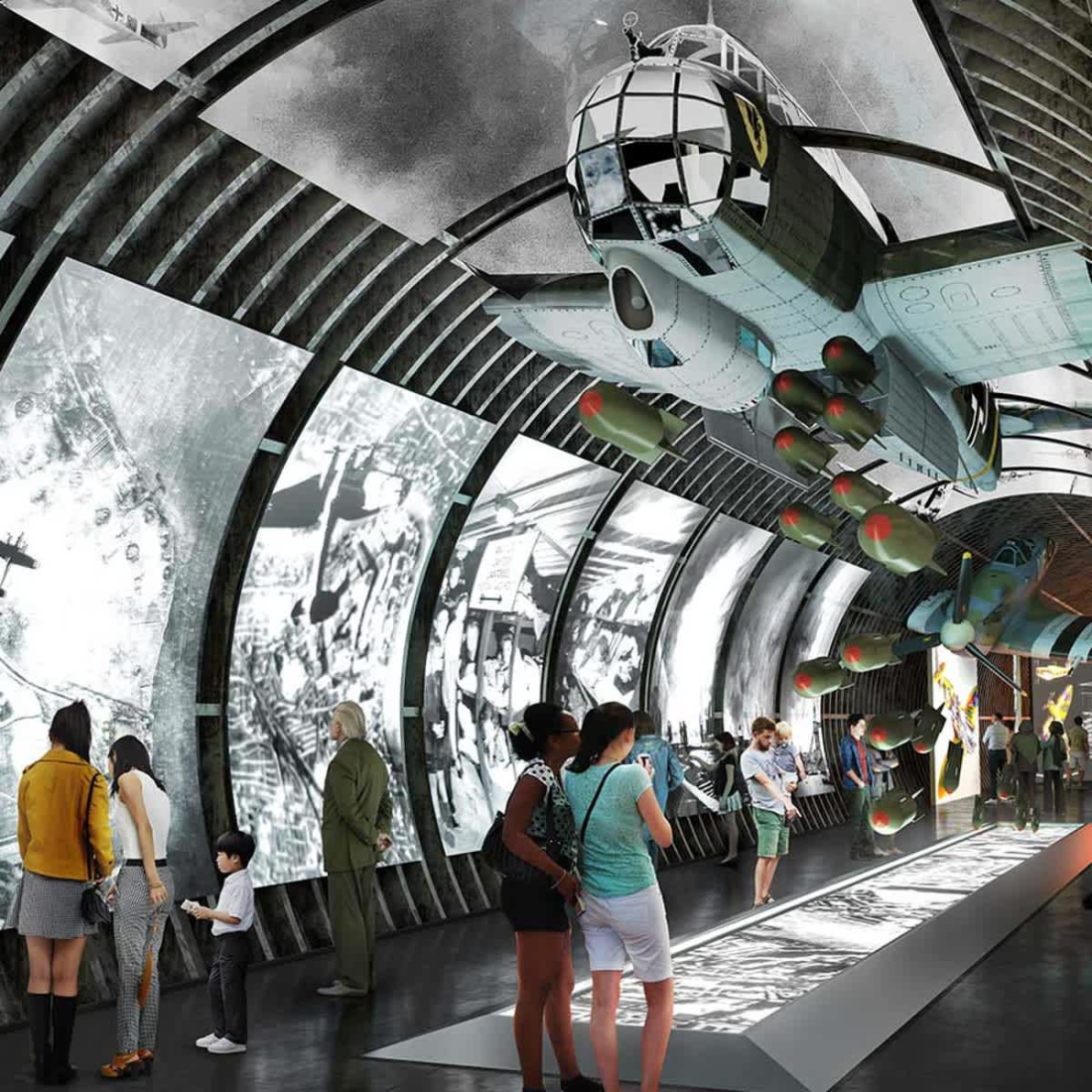
The attraction will utilize cutting-edge immersive technology to bring the tunnels' stories to life, including high-resolution screens displaying historical footage, interactive exhibits that respond to visitors' actions, and environmental effects that recreate the atmosphere of different historical periods . Educational programs will cater to diverse audiences, from school groups learning about WWII history to specialized tours for academic researchers and intelligence historians . The multi-sensory approach ensures that visitors will not merely observe history but experience it in ways that traditional museums cannot provide .
The World's Deepest Licensed Bar
One of the most anticipated features of the London Tunnels will be the restoration and expansion of what was once Britain's deepest licensed bar, located 40 meters below street level . The original bar, operated by British Telecom in the 1980s, served the telecommunications workers who maintained the tunnels' critical communication systems . The new incarnation will honor this heritage while providing a unique dining and entertainment experience that visitors cannot find anywhere else in the world .

The restored bar will serve period-appropriate cocktails, including Vesper Martinis as a tribute to the tunnels' James Bond connection, creating an authentic espionage atmosphere . The venue will accommodate several hundred visitors at a time and will be available for private events, corporate functions, and cultural programming . This unique combination of historical authenticity and modern hospitality will provide a sustainable revenue stream while offering visitors an unforgettable experience .
Interactive Bond and Espionage Exhibits
The museum will feature comprehensive exhibits exploring the real-world inspirations for James Bond, including detailed displays about Ian Fleming's work at the tunnels and the authentic espionage techniques that influenced his writing . Interactive displays will allow visitors to experience simulated intelligence operations, explore the connection between real SOE gadgets and Bond's fictional equipment, and understand the historical context that shaped both actual and fictional espionage . These exhibits will appeal to both Bond enthusiasts and serious students of intelligence history .
The attraction will also explore the broader context of 20th-century espionage, including the Special Operations Executive's role in WWII, the development of secure communications during the Cold War, and the evolution of intelligence gathering techniques . Visitors will gain insights into how real intelligence operations influenced popular culture and how fictional portrayals like Bond have shaped public perceptions of espionage work .

Economic Impact and Tourism Projections
Visitor Expectations and Comparisons
The London Tunnels project is projected to attract approximately 3 million visitors annually, positioning it among London's most popular tourist attractions . This visitor target would exceed the Tower of London's annual attendance of 2.8 million and rival the London Eye's 3.5 million annual visitors . The attraction's unique combination of historical significance, technological innovation, and cultural relevance creates a compelling proposition for both domestic and international tourists .
Ticket prices are expected to start at £30 or higher, reflecting the premium nature of the experience and the significant investment required for the attraction's development . The pricing strategy positions the London Tunnels as a premium cultural attraction, comparable to other high-end London experiences while remaining accessible to a broad audience . Early visitor research suggests strong demand across multiple demographic segments, from history enthusiasts to technology aficionados to Bond fans .
Economic Benefits for London
The £120 million investment in the London Tunnels project is expected to generate substantial economic benefits for London's tourism sector . Annual visitor spending is projected to contribute £60-80 million in additional economic activity to the local area, supporting restaurants, hotels, retail establishments, and other tourism-related businesses . The project will create more than 200 permanent jobs directly, with additional employment opportunities in related sectors .
The attraction's location at the intersection of London's West End and the historic Square Mile positions it to benefit from existing tourist traffic while creating new reasons for visitors to explore this area of central London . The development aligns with the City of London's "Destination City" policy, which aims to boost seven-day-a-week footfall for hospitality, retail, and leisure sectors . The project represents a significant contribution to London's post-pandemic tourism recovery, offering a unique attraction that cannot be replicated elsewhere .
Timeline and Opening Preparations
Construction and Development Phase
Construction of the London Tunnels attraction is scheduled to begin in late 2025 or early 2026, with an anticipated opening in late 2027 or early 2028 . The development timeline reflects the complexity of working within a historically significant underground environment while installing state-of-the-art technology and ensuring full accessibility . WilkinsonEyre's design team is coordinating with heritage specialists, technology providers, and safety experts to ensure the project meets the highest standards for both historical preservation and visitor experience .
The pre-construction phase includes detailed planning approval processes with both the City of London Corporation and Camden Council, both of which have already granted preliminary approvals . Public consultation and stakeholder engagement continue as the project moves toward construction, with particular attention to concerns from local residents and businesses . The development team has committed to minimizing disruption during construction while maintaining the highest standards of historical preservation .

Legacy and Cultural Significance
The transformation of the Kingsway tunnels represents more than just the creation of a new tourist attraction; it preserves and celebrates a crucial chapter of British history that might otherwise remain hidden . The project ensures that the stories of the brave men and women who worked in these tunnels during WWII and the Cold War will be told to future generations . By opening these spaces to the public for the first time in their 80-year history, the London Tunnels project democratizes access to historical experiences that were previously available only to a select few .
The attraction will serve as both entertainment and education, inspiring visitors to explore broader themes of courage, innovation, and service while providing an authentic connection to the real events that shaped the modern world . As Murray noted, "I think that we need to respect the people, the men and women that sacrificed themselves to give us all the democratic rights we have today" . The London Tunnels will stand as a testament to their service and a bridge between the hidden history of the past and the public understanding of the present .
The project positions London at the forefront of heritage-driven entertainment, demonstrating how historical sites can be reimagined to engage modern audiences while preserving their essential character and significance . When the London Tunnels opens in 2028, it will offer visitors an unprecedented opportunity to walk in the footsteps of real spies, experience the birthplace of James Bond's inspiration, and discover the hidden history that lies beneath one of the world's great cities .
Ukraine has welcomed the European Union’s decision to provide €90 billion in support over the next two years, calling it a vital lifeline even as the bloc failed to reach agreement on using frozen Russian assets to finance the aid.
European Union foreign policy chief Kaja Kallas has warned that attempts to reach a peace agreement in Ukraine are being undermined by Russia’s continued refusal to engage meaningfully in negotiations.
Petroleum products are being transported by rail from Azerbaijan to Armenia for the first time in decades. The move is hailed as a tangible breakthrough in efforts to normalise relations between the long-time rivals.
Chinese Foreign Minister Wang Yi has held a phone conversation with his Venezuelan counterpart Yvan Gil at the latter’s request.
A rare pair of bright-green Nike “Grinch” sneakers worn and signed by the late NBA legend Kobe Bryant have gone on public display in Beverly Hills, ahead of an auction that could set a new record for sports memorabilia.
A rare pair of bright-green Nike “Grinch” sneakers worn and signed by the late NBA legend Kobe Bryant have gone on public display in Beverly Hills, ahead of an auction that could set a new record for sports memorabilia.
The Games of the Future 2025 kicked off with an opening ceremony, merging physical sports and digital e-sports to create a unique "phygital" category.
In a ground-breaking development, artificial intelligence (AI) is taking on new forms in Japan, where it has extended to a more personal and intimate domain being romantic relationships.
Peru has received 347 repatriated cultural artefacts from the U.S., including rare pre-Columbian ceramics and textiles, in one of the country’s largest heritage returns in recent years.
Iceland is has become the fifth country to withdraw from the 2026 Eurovision Song Contest.
You can download the AnewZ application from Play Store and the App Store.

What is your opinion on this topic?
Leave the first comment